Art Dogs is a weekly dispatch introducing the pets—dogs, yes!, but also cats, lizards, marmosets, and more—that were kept by our favorite artists. Subscribe to receive these weekly posts to your email inbox.
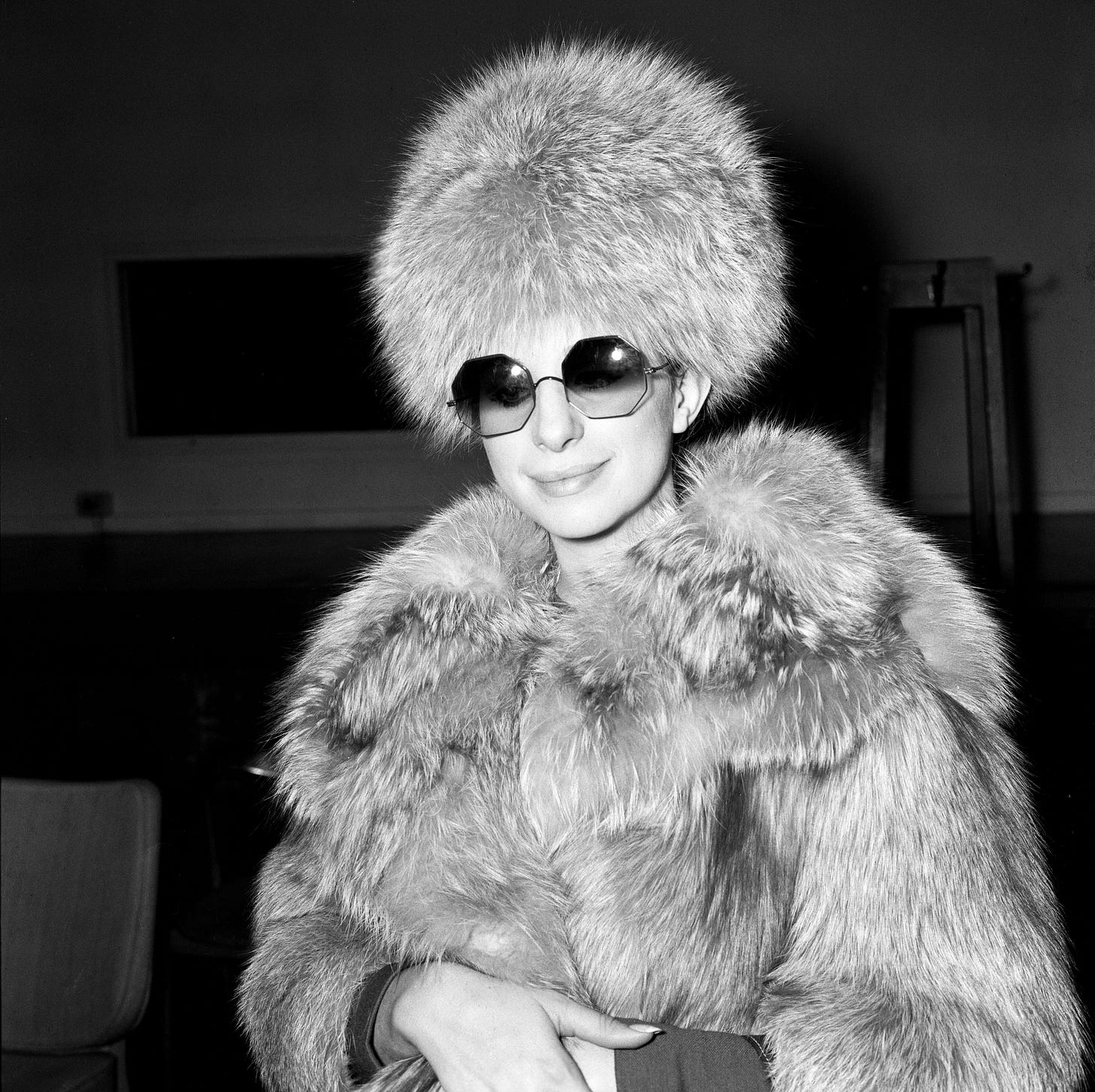
Barbra Streisand, or the "Queen of the Divas," is one of the most successful recording artists of all time.
She has been a performer for over six decades, and is one of the few people who has been awarded an Emmy, Grammy, Oscar, and Tony (EGOT). She starred in sixteen major movies, three of which she directed. She sold over 150 million records, and Taylor Swift only just surpassed Babs this week as the woman with the most number one albums.
Much of this success is due to the quality and range of her “peerless” voice. Here’s how The New Yorker described her talent in 1994:
As the popular singer with perhaps the largest aural presence of all time--larger even than the sonic ripples set off by old Sophie Tucker, and by Ethel Merman and Judy Garland and Aretha Franklin. Streisand is a contralto with a couple of octaves at her command, and she wows her listeners with her shrewd dynamics (in-your-ear soft here, elbowing-loud there), her bravura climbs, her rolling vibrato, and the singular Streisand-from-Brooklyn nasal quality of her voice--a voice as immediately recognizable in its way as Louis Armstrong's. She has reached a godly plateau as a singer…She smooths the melodic hills, raises the valleys, equalizes the emotions, and encases the lyrics in a kind of silken sheen.1
Marvin Hamlisch, who was Barbra’s rehearsal pianist and wrote the music for The Way We Were, recalled his awe at her musical phrasing: “There was nothing she couldn’t do with that voice, and she had an instinctual music taste that brought genius to everything she sang.”
Today, Barbra Streisand has legions of fans, including my mom and singer Tony Bennett, who said before he passed: “From her humble beginnings to her triumph in the theater, no one has been more successful than Barbra. She is at the pinnacle of her art.”
Babs’ early life wasn’t easy. She was born Barbara Joan Streisand on April 24, 1942, in Brooklyn to Diana Ida, a secretary, and Emanuel, a high school teacher. (Streisand is, remarkably, not a stage name.) A few months after Barbara’s first birthday, her father died suddenly at age 34 of complications from a respiratory failure and the family fell into near poverty. Her mom moved Barbara and her brother into her parents’ home in Williamsburg.2 Barbara remembers that "everybody else's father came home from work at the end of the day. Mine didn't."
Barbara later told The New Yorker about the tight quarters she lived in during these years. “Growing up, we never had a couch until I was eight years old. We only lived with a dining room and an old radio. My grandfather and grandmother, after my father died, we had to move in with them. I guess the dining room became their bedroom, and the other bedroom was for me, my mom, and my brother.”

Barbara attended the ultra-Orthodox girls’ Yeshiva of Brooklyn for her first three years of school. Her mom had a great voice and occasionally sang professionally. Barbara realized she had talent while singing with her mother as a pre-teen. As soon as she graduated from Erasmus Hall High School in Flatbush, Brooklyn, she left home to pursue stardom in Manhattan, working at odd jobs to support herself along the way.
Her “Jewish looks” made it hard to break into show business at the start. Even in 1962, after she began to gain fame, The New Yorker wrote a short profile about her, and couldn’t help noting her appearance:
Miss Streisand, who in her secretarial role drew such (nonpejorative) adjectives as “oafish,” “plain,” and “homely” from the critics, is in private life an animated, poised, and unconventionally beautiful young woman, with an aquiline nose, great big soulful eyes, and great big soulful eyelashes.
To get her name out there, Barbara performed in the underground gay bar scene—in particular the Lion Club, one of the premier gay clubs in New York.3 Her boyfriend convinced her to enter a talent contest there. After performing two songs, there was “a stunned silence from the audience, followed by thunderous applause.” She was named the winner, invited back, and sang at the club for several weeks.4 Word of her talents spread quickly and the Lion Club was mobbed every evening to hear Barbara. “She had become a gay icon overnight, and has remained so ever since.”5
It was during these years that she dropped the second “a” from her first name, switching from “Barbara” to “Barbra,” and cultivated a sense of confidence and onstage humor. When she was 76 years old, Barbra recalled that “when I first came out, when I was eighteen, I remember somebody asking me, ‘How do you hold the note so long?’ And I said, ‘Because I want to.’ And it is the same thing now.”6

At 19, she landed a role in a Broadway musical called I Can Get It For You Wholesale in 1962, and garnered critical acclaim. She fell in love with the male lead, Elliott Gould, and married him in 1963. Then she had her big break in 1964 with a lead role in Funny Girl on Broadway and the release of The Barbra Streisand Album. The album remained on the charts for nearly eighteen months, establishing Streisand as one of the most popular American singers.
Funny Girl introduced two of her signature songs, "People" and "Don't Rain on My Parade." Because of the musical's overnight success, Barbra appeared on the cover of Time. The show traveled to the West End in 1966, and became a film in 1968.
Barbra was officially a star.


It was during her ascent to fame that Barbra’s first dog, Sadie, came into her life. Sadie was a gift from the Broadway cast of Funny Girl and named after a song from the show.
The cast of "Funny Girl," when I was 22, gave me a surprise birthday party, and the cake was sitting on a box. So they said “Put your hand in the box."… I stuck my hand in the box and pulled out this little thing and fell in love and she became my little girl…I've never had a dog, and the idea that they bought me this dog, I couldn't believe it.
For more than a decade, Sadie traveled the world with Barbra, seemingly appearing in more photos than her toddler son or husband, including on album art, magazine covers, television specials, and more.
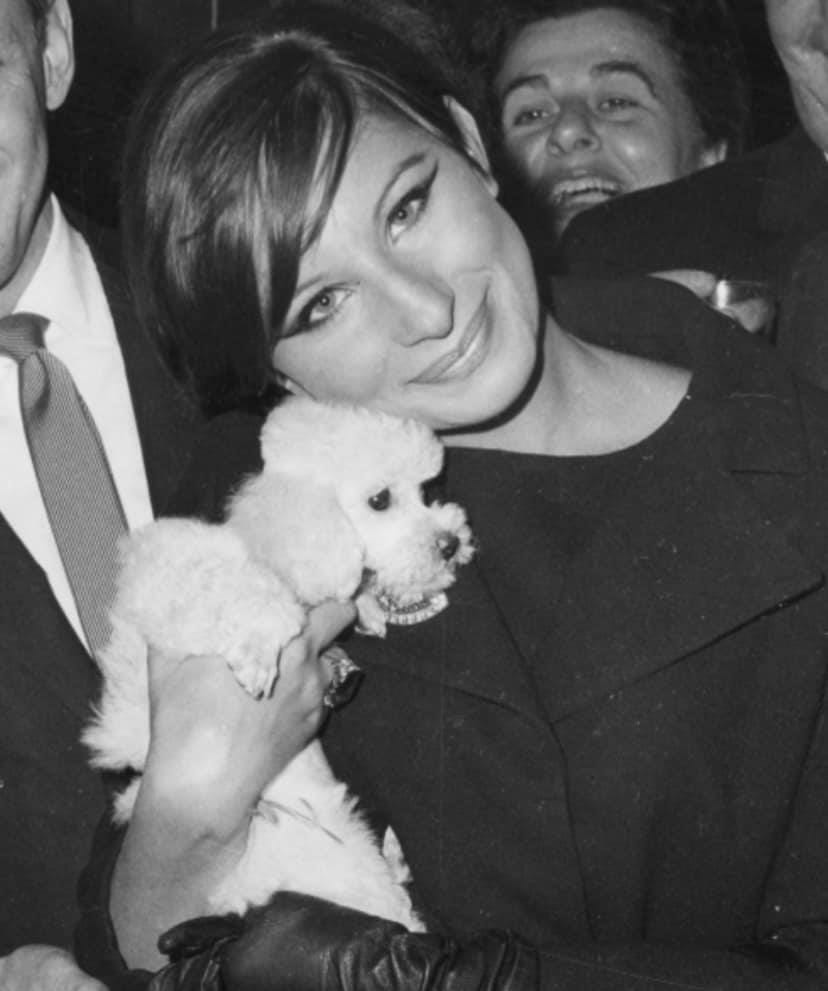
After Sadie died, Streisand owned more dogs, including a “string of Sadies,” Fanny, Cinders, Sammy (a boy who Streisand mourned publicly on Oprah), then the infamous Samantha or “Sammie,” a female Coton de Tulear, one of the rarest dogs in the world.
Sammie, who had an "oddball personality," was extra special to Babs, and went everywhere with her—showing up on the concert stage, in the artwork of two of her number one albums, and all over social media. Barbra described Sammie as "like the daughter I never had."7


When Sammie died in 2017 at 14 years old, Barbra was devastated. The story made headlines. Babs described the mourning period as if "Samantha were a child." (Meanwhile, her son Jason Gould was…55 years old and healthy!)
Unsurprisingly, Barbra decided to get new dogs after Samantha’s death, but was unable to find any more extant curly haired Coton de Tulears like Sammie. So Babs took matters into her own hands, shelling out an estimated $100,000 to a lab service to create Miss Scarlett and Miss Violet, two genetic clones of Sammie. “You don't know if you’re going to get five dogs or none—I ended up with two," Babs explained.
Cloning dogs is very new, and it’s expensive as hell, so when word got out about Barbra’s dogs, it caused such a fervor that Barbra had to write an Op-Ed for the Times explaining her reasoning. She described her experience to The New Yorker around this time:
[Samantha] was like a daughter to me. She looked me in the eyes. She knew when I was in distress, and she would just lie next to me and cuddle. I mean, I get tears in my eyes now just thinking about her.
And so when a friend of mine cloned his dog that he was very close to, I thought, I should do that, because then I’ll have her DNA, at least. Each dog has their own personality, and you can’t clone a soul, obviously.
It was on her deathbed, actually. They just took a few cells from the inside of her cheek and the outside of her tummy, on her skin.
John Woestendiek, author of a book on dog cloning, explained the process further: “In addition to the tissue sample of the original dog, cloners will need to harvest egg cells from dogs in heat—maybe a dozen or so. And, after zapping the merged cells with electricity so they start dividing, they’ll need surrogate mother dogs, to carry the puppies to birth.”8
When I first heard about Barbra Streisand’s cloned dogs I was floored. You can do that!? Wow, money can buy truly anything!
But after studying her life more, I softened to the idea. Of course Barbra Streisand was one of the first to clone her dogs. Throughout her career, Barbra “DGAF.” She lived life her own her way, no matter what other people thought of her. That personality trait was crucial to her success.
When she was young and “too Jewish” looking, she fought her way to the stage and wowed people with raw talent.
Then she transcended singing and Broadway to become a film star and, eventually, one of the first major female film directors. (With the release of Yentl in 1983, she became the first woman to write, produce, direct, and star in a major studio film.)


She has been outspokenly politically throughout her career. She was even added to President Richard Nixon's 1971 list of political enemies because of her anti-Vietnam stance.
She trail blazed with her romantic relationships as well. For example, at age 50 she dated 22-year-old Andre Agassi, one of the best tennis players in the world at the time. Andre later wrote in his memoir that "Dating Barbra Streisand is like wearing Hot Lava."
And even though she was the most successful female singer in the world, she didn’t perform live for 27 years because she didn’t want to. Pass!
Simply put, Barbra “DGAF" over and over again. Look at her now.

The little Brooklyn girl who grew up Orthodox in poverty without a father is on top, living in a compound in Malibu overlooking the Pacific Ocean, surrounded by angelic white-furred clones.
Barbra quite literally hasn’t let anyone “rain on her parade” in her lifetime.
I say, go get it, Babs.
Don't tell me not to fly
I've simply got to
If someone takes a spill
It's me and not you
Who told you you're allowed
To rain on my parade?!
…
I gotta fly once
I gotta try once
Only can die once, right, sir?
Ooh, life is juicy
Juicy, and you see
I gotta have my bite, sir!Get ready for me, love
'Cause I'm a "comer"
I simply gotta march
My heart's a drummer
Don't bring around a cloud
To rain on my parade!
I'm gonna live and live now
Get what I want--I know how
One roll for the whole shebang
One throw, that bell will go clang
Eye on the target--and wham--
One shot, one gun shot, and bam!
Note: Sadie makes a cameo in the “Don’t Rain on My Parade,” scene from the Funny Girl film. Watch the video above closely around the 1:30 mark, she’s sitting across from Barbra on the train.
Art Dogs is a weekly dispatch introducing the pets—dogs, yes!, but also cats, lizards, marmosets, and more—that were kept by our favorite artists. Subscribe to receive these weekly posts to your email inbox.
https://www.newyorker.com/magazine/1994/06/20/barbra-streisand
https://jwa.org/encyclopedia/article/streisand-barbra
https://jwa.org/encyclopedia/article/streisand-barbra
https://walkerhomeschoolblog.wordpress.com/2018/01/26/barbra-streisand-and-evergreen-from-a-star-is-born/
https://jwa.org/encyclopedia/article/streisand-barbra
https://www.newyorker.com/culture/the-new-yorker-interview/barbra-streisand-can-hear-herself-again
http://www.timesofisrael.com/barbra-streisand-morns-her-beloved-girl-sammie-the-dog/?utm_source=dlvr.it&utm_medium=twitter
https://www.nationalgeographic.com/animals/article/barbra-streisand-clone-pet-dogs-explained-spd





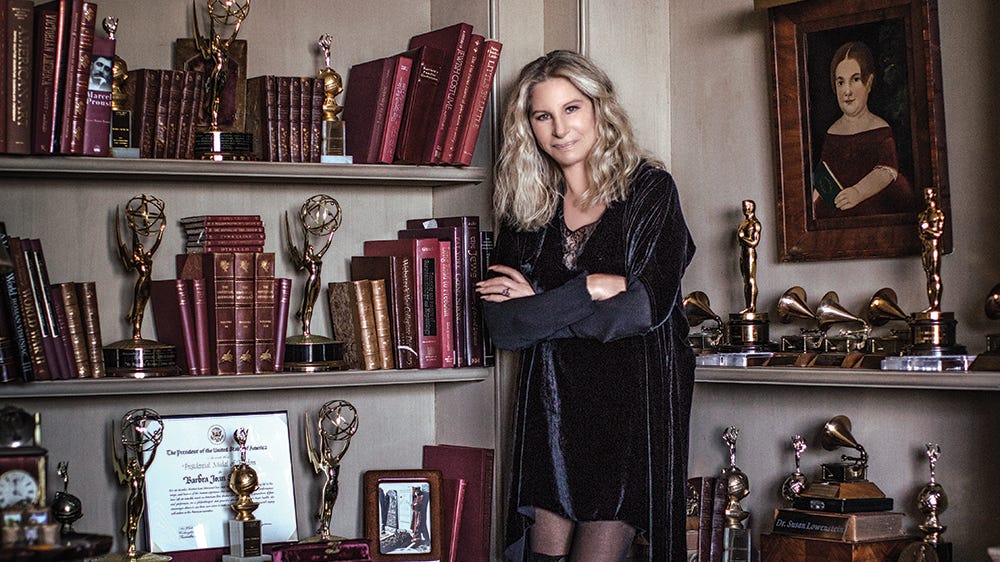


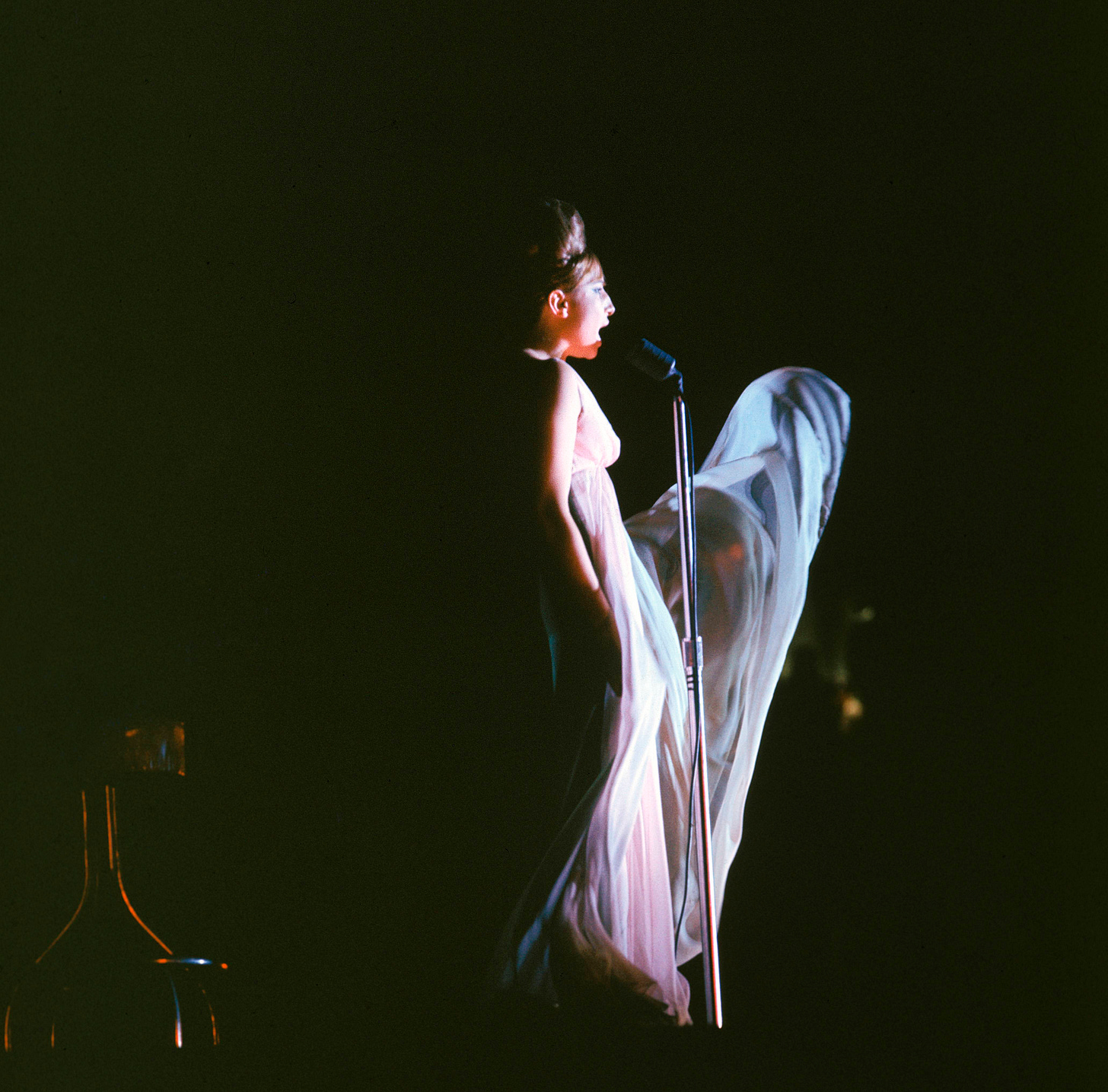

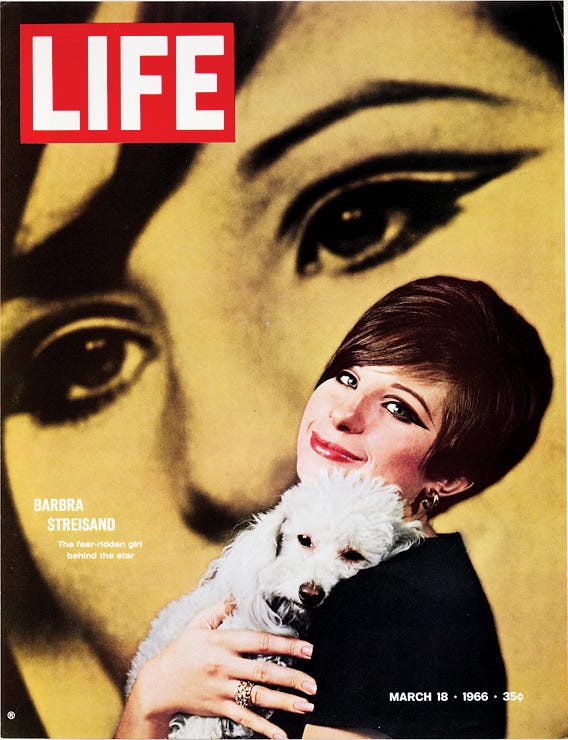
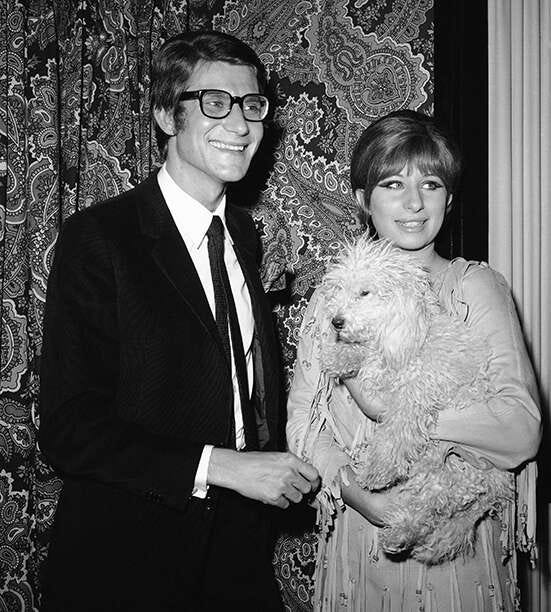




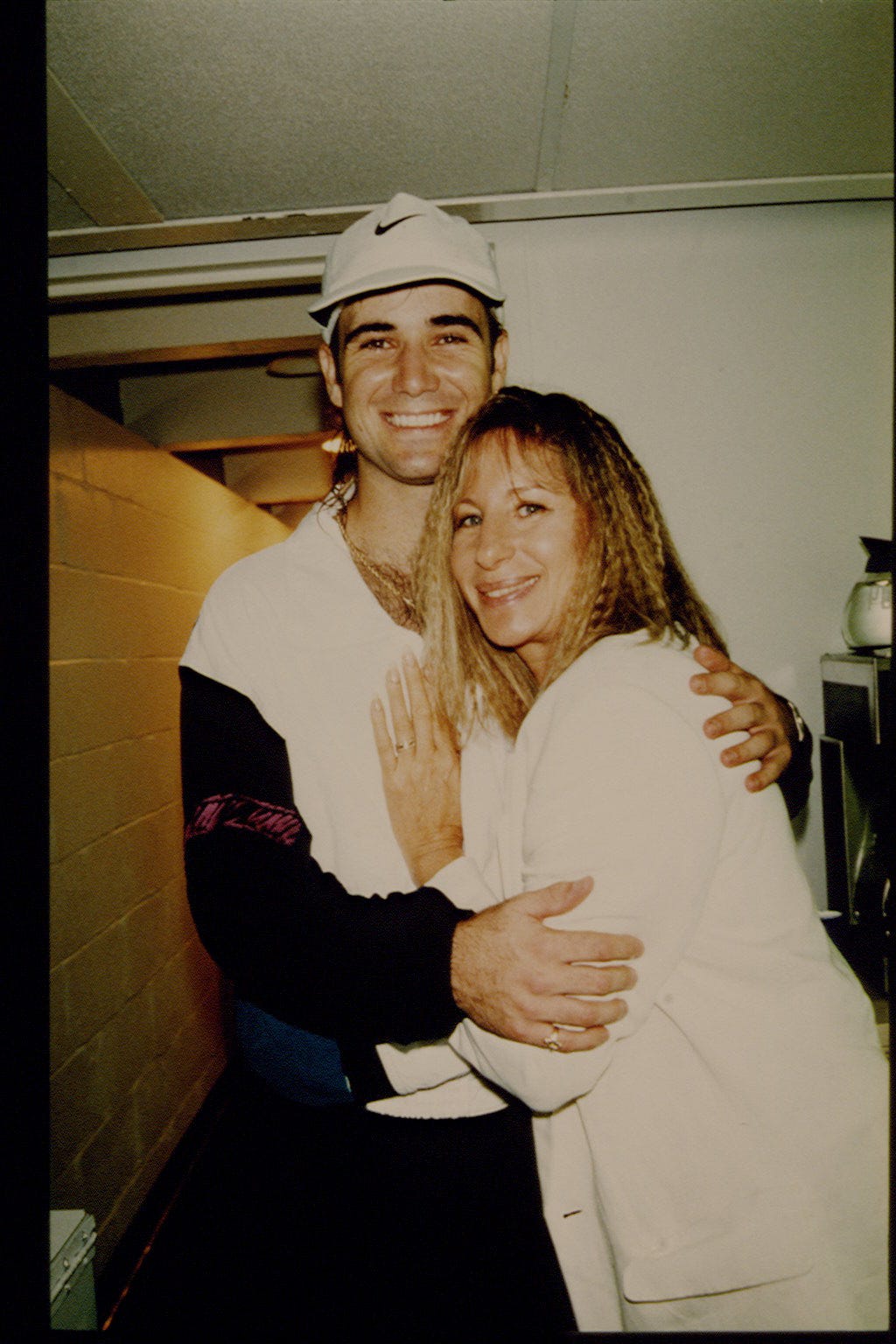
This made me cry and cackle and is, as always, brilliant!!
This is a beautiful piece. I had not thought about her in a while and happened to overhear a conversation between two ladies about how she must have lost her voice, maybe she is Ill. For once I kept my mouth shot! Why in the world would she want to be out in the heat of this summer, be out so the public can pick at her until she “bleeds”. I think she is brilliant for doing as she pleases when she pleases. Bravo Babs and Bravo Shire Jansen!